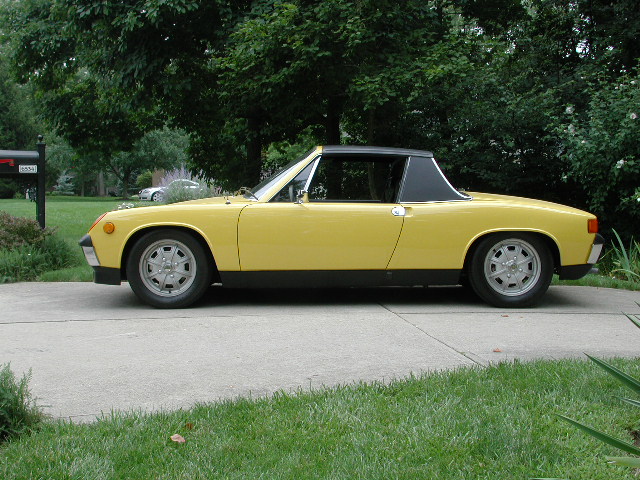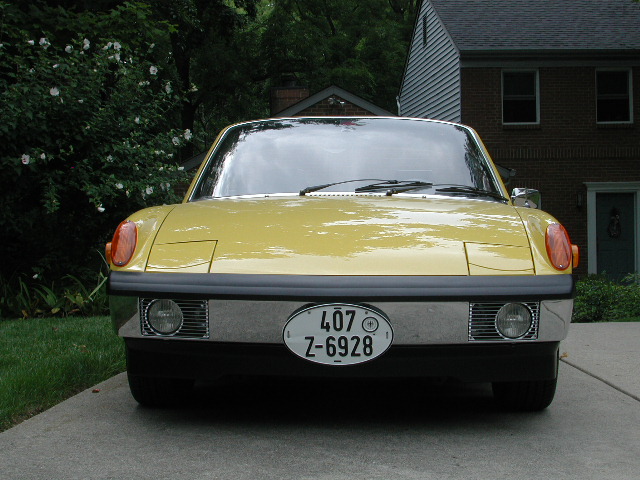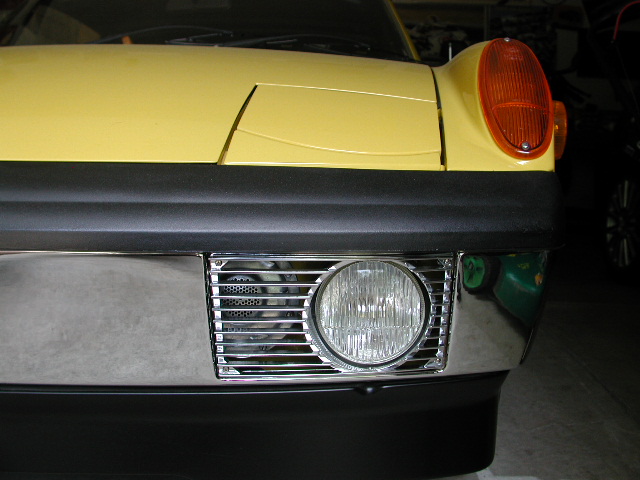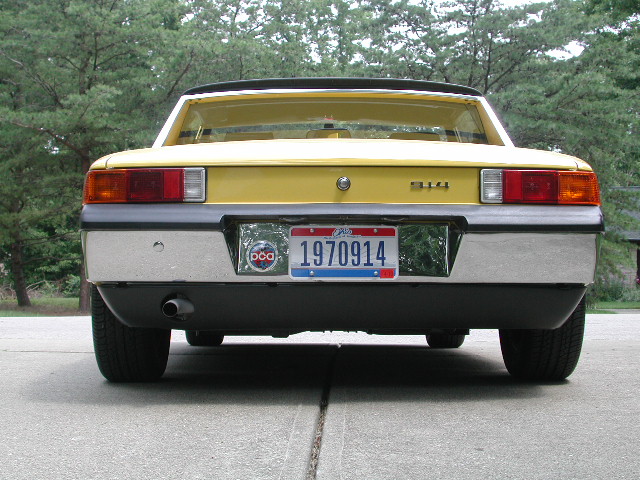|
|

|
Porsche, and the Porsche crest are registered trademarks of Dr. Ing. h.c. F. Porsche AG.
This site is not affiliated with Porsche in any way. Its only purpose is to provide an online forum for car enthusiasts. All other trademarks are property of their respective owners. |
|
|
 Model Specific Information
Model Specific Information
914/4: 70 71 72 73 74 75 76 914/6: 70 71 72
| 1970 Neun vierzehn |
 Sep 4 2009, 11:28 PM Sep 4 2009, 11:28 PM
Post
#1
|
|
Advanced Member     Group: Members Posts: 3,199 Joined: 16-March 06 From: cincinnati, ohio Member No.: 5,727 |
I very much remember when the 914 was introduced. It even merited a small picture on the cover of R&T. Buying one however, was another matter, for it was out of my price range in 1970. In 1975, I did purchase the 1970 /4 that I still own.
This background is necessary as to share with you the fact that I have read and observed just about all the criticisms that have been aimed at the 914s' design for almost 40 years. Now in the context of 1970, I will grant you that the 914 was not a particularly "pretty" or "muscular" or "stylish" design. In that era, the enthusiast could look to a Datsun 240Z, Triumph TR-6, Ferrari 365/GTB, Mercedes 280SL, Jaguar XK-E, or a Corvette to find beauty or elegance or muscle. But the 914s' design was puzzling to most eyes. The classic, long hood/short rear deck proportions were missing. There were no hood scoops or flared fenders or "designer labels" attached to it. Back in 1970, no one really understood the design. Forty years later, the pundits still use the words "awkward" and "uninspired" to describe the 914. In the style of Robert Cumberford, who contributes to AUTOMOBILE magazine, I shall share my own unsolicited design analysis. In profile, the 914 is decidedly flat. There are no voluptuous fender lines or curves on the car. The rear deck is flat. The front end is short, compared with the back. The most prominent feature of the front of the car are the hidden headlights and the pinched turn signal appliances. The rear end of the car is even more featureless; flat lines, broad barely curved surfaces, and almost no adornment, or "jewelry" as the use is applied today. The tail lights are really just long rectangles. But looking at the design in a 2010 context, the 914 is a remarkably clean effort, free of the ungainly tail light shapes, contorted fenders and deck lids, and awkward rooflines that are commonplace on many of todays' cars, cross-overs and SUVs. The 914, with its long rear fender, relative to the one in the front, and flat surfaces in side, back and overhead views speak not only of engine placement, but of (flat) engine design as well. With a boxer engine placed amidships, there is no need for tall architecture to suggest an I4, I6, or V6 to provide for the energy needs of this car. At the front, the 914 observer will note how harmoniously the hidden head light covers flow smoothly into the bumper cutouts for the fog lights and their grilles. The small front turn signal placement at the leading edge and corner of the front fender echo a design element that Porsche had principled from its earliest cars, that is, by defining the leading, outside edges of the front fender (see 356, 911), the driver is enabled to better place the car as he enters and exits corners. (Note: that design element was abandoned in the 924/944/928 models, but returned in the current Boxter/Cayman examples). Last, but certainly not the final word on a 914 styling critique, is the rollbar design. Speaking personally, I consider this the most difficult area to assess. The fact that most 914s had the rollbar covered with vinyl is understandable in that it serves two purposes. First, the covering is to call attention to the fact that this car has an integrated rollbar, and thereby alludes to both safety and racing heritage. Secondly, the black vinyl on the rollbar reduces the mass of the 914 in the midship area, and combined with black rocker panels and matching black front and rear valences, they visually reduce the height of an already low car. In todays' design context, the rollbar area would likely be finished in a matt or low-gloss black material, carbon fiber, or aluminum, something akin to what Audi is doing with their R8. Altogether, I consider that the 914s design has aged remarkably well, due to both a restrained effort to marginalize "styling" by late '60 standards, and the fact that the bodywork speaks purely of the car's purpose, engine placement, and heritage. Paul Attached image(s)    
|
Posts in this topic
 1970 Neun vierzehn 914 Design analysis Sep 4 2009, 11:28 PM
1970 Neun vierzehn 914 Design analysis Sep 4 2009, 11:28 PM
 MDG Nicely done, Paul.
My own long standing opinion o... Sep 5 2009, 06:58 AM
MDG Nicely done, Paul.
My own long standing opinion o... Sep 5 2009, 06:58 AM
 Porsche Rescue I was able to stretch and buy a new '70. Only ... Sep 5 2009, 09:02 AM
Porsche Rescue I was able to stretch and buy a new '70. Only ... Sep 5 2009, 09:02 AM

 SirAndy
Here it is pictured somewhere in Utah in 1970.
:t... Sep 5 2009, 01:46 PM
SirAndy
Here it is pictured somewhere in Utah in 1970.
:t... Sep 5 2009, 01:46 PM
 SirAndy Some interesting reading about the actual design p... Sep 5 2009, 01:47 PM
SirAndy Some interesting reading about the actual design p... Sep 5 2009, 01:47 PM
 Pat Garvey
I very much remember when the 914 was introduced.... Sep 5 2009, 05:40 PM
Pat Garvey
I very much remember when the 914 was introduced.... Sep 5 2009, 05:40 PM
 914runnow Your 'Article and pics' need to forward to... Sep 6 2009, 12:04 PM
914runnow Your 'Article and pics' need to forward to... Sep 6 2009, 12:04 PM
 SGB I think we all have realized the car is a much mor... Sep 7 2009, 10:20 PM
SGB I think we all have realized the car is a much mor... Sep 7 2009, 10:20 PM
 Tom_T Great Synopsis Paul! :agree:
I too was ... Sep 9 2009, 12:52 AM
Tom_T Great Synopsis Paul! :agree:
I too was ... Sep 9 2009, 12:52 AM  |
1 User(s) are reading this topic (1 Guests and 0 Anonymous Users)
0 Members:

|
Lo-Fi Version | Time is now: 28th May 2024 - 03:52 AM |
Invision Power Board
v9.1.4 © 2024 IPS, Inc.







